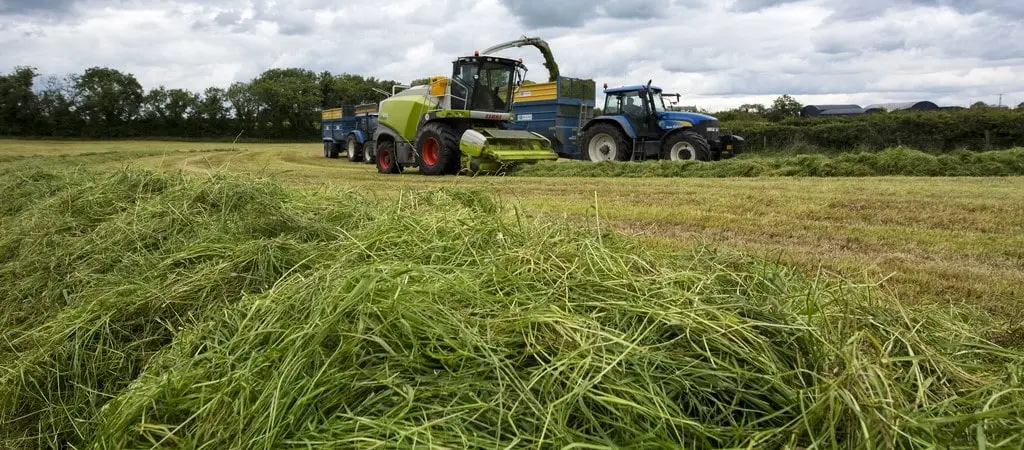Grasses (Gramineae) Community
The Role of Grasses in Sustainable Forage Systems and Silage Production
- This topic is empty.
- AuthorPosts
- April 14, 2025 at 6:09 am #626475
 Agric4ProfitsKeymaster
Agric4ProfitsKeymaster
Grasses are a cornerstone of livestock nutrition, providing essential nutrients and serving as the foundation of sustainable forage systems. As the demand for high-quality animal feed continues to grow, the role of grasses in sustainable forage systems and silage production becomes increasingly important.
With proper management, grasses can provide a reliable and nutritious feed source, enhance soil health, and support sustainable farming practices. Silage production, in particular, offers an efficient way to store and preserve grass for use during periods of low pasture availability.
1. Selecting Grass Species for Optimal Forage Quality
The first step in building a sustainable forage system is choosing the right grass species. Different types of grasses offer varying levels of nutritional value, growth rates, and resistance to environmental stresses.
For example, species like ryegrass, clover, and fescue are well-suited for high-quality forage production, offering excellent digestibility and protein content. Selecting grasses that are adapted to local soil and climate conditions ensures year-round availability and improves the overall efficiency of the forage system.
2. Improving Soil Fertility and Grass Growth
For grasses to thrive and provide high-quality forage, soil health is essential. Sustainable farming practices such as the use of organic fertilizers, crop rotations, and proper irrigation systems help maintain soil fertility.
Healthy soils promote robust grass growth, leading to higher forage yields and better quality silage. Additionally, maintaining soil pH at optimal levels and regularly testing soil for nutrient deficiencies allows farmers to make precise fertilizer applications, enhancing both grass production and forage quality.
3. Optimizing Silage Production Through Proper Harvesting and Storage Techniques
Silage is an effective method for preserving grasses and other forage crops, allowing livestock to benefit from high-quality feed throughout the year, even when fresh pasture is unavailable. The key to successful silage production lies in the timing of harvest, ensuring grasses are cut at the right stage of growth—typically when they are in the boot to early flowering stage, providing optimal nutritional content.
Proper storage methods, such as compacting silage in airtight conditions, are critical to prevent spoilage and nutrient loss. When done correctly, silage can provide a consistent, high-quality feed source throughout the winter months.
4. Enhancing Pasture Management for Sustainable Grazing
Sustainable grazing systems rely heavily on the health and productivity of grasses. Implementing proper pasture management techniques, such as rotational grazing, can help prevent overgrazing and encourage grass regeneration.
This practice allows grasses to recover between grazing periods, ensuring that pastures remain productive and resilient. Additionally, planting diverse forage species and maintaining adequate rest periods between grazing sessions can increase biodiversity, enhance soil health, and improve the nutritional value of the pasture for livestock.
5. Integrating Grasslands with Livestock Health and Farm Sustainability
Grasses not only provide vital nutrition for livestock but also play an essential role in promoting overall farm sustainability. Healthy grasslands sequester carbon, improve water infiltration, and reduce soil erosion, contributing to the farm’s environmental resilience.
Additionally, incorporating grass-based feeding systems into livestock operations reduces the need for purchased feed, lowering farm costs and improving profitability. By focusing on grass management, farmers can create integrated, sustainable farming systems that benefit both livestock and the environment.
The role of grasses in sustainable forage systems and silage production is central to maintaining productive, resilient, and environmentally-friendly farming systems. Through careful selection of grass species, soil fertility management, optimal silage production, and effective pasture management, farmers can ensure high-quality forage for their livestock year-round.
By embracing sustainable grassland practices, they not only improve livestock health and productivity but also contribute to broader environmental goals. Grasses, when managed properly, are key to fostering long-term sustainability in agriculture.
Read Also: Optimizing Grassland Management for Enhanced Livestock Productivity
- AuthorPosts
- You must be logged in to reply to this topic.

